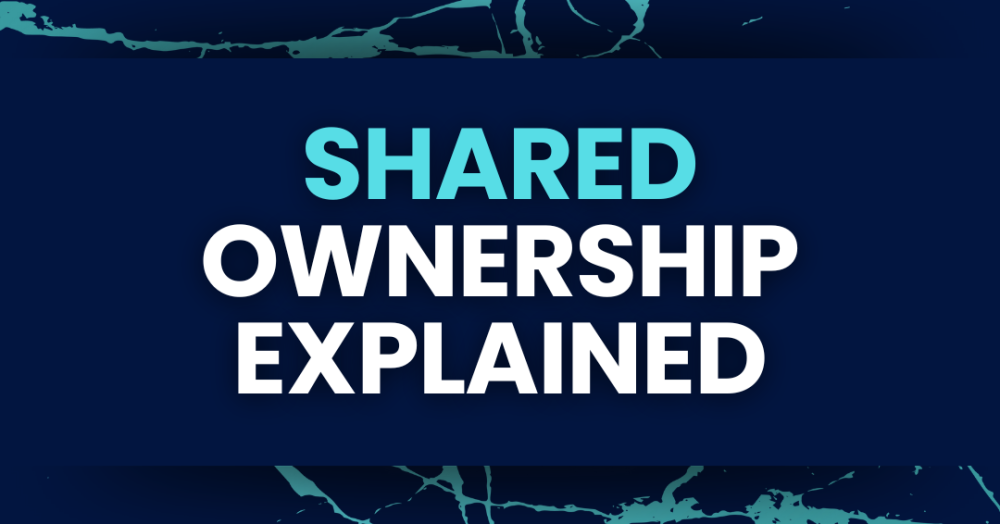For most the dream of owning a property can feel just out of reach—especially with rising house prices and cost of living pressures. Shared ownership is one scheme that aims to bridge the affordability gap and help people get a foot on the property ladder. But what exactly is shared ownership, and is it the right move for you? Let's break it down.
🏠 What Is Shared Ownership?
Shared ownership is a government-supported scheme in the UK that allows you to buy a share of a home (typically between 10% and 75%) and pay rent on the remaining portion to a housing association. You’re both a homeowner and a tenant.
Over time, you can choose to purchase more of the property in a process called “staircasing”—potentially up to 100% ownership, depending on the terms of the lease.
🧾 How Does It Work?
Let’s say the property you want to buy is valued at £250,000. Under a shared ownership scheme:
- You buy a 25% share = £62,500
- You pay a deposit (usually 5–10% of your share)
- You take out a mortgage for the remainder of your share
- You pay subsidised rent on the 75% still owned by the housing association
- You also pay monthly service charges and possibly ground rent if the home is leasehold
Later, you can buy more shares—typically in 10% increments—until you own more or all of the property.
✅ Pros of Shared Ownership
1. Lower Entry Costs
Deposits and mortgages are based only on the portion you’re buying, making homeownership more accessible.
2. Step Onto the Property Ladder
It offers a realistic way into homeownership, especially in expensive areas where full ownership might be unaffordable.
3. Potential for Full Ownership
Over time, you may staircase to full ownership if your finances allow.
4. Reduced Rent Payments
The rent paid on the unsold share is usually below market rates.
5. Priority Access
Key workers and local residents may get priority access to shared ownership homes in some developments.
⚠️ Cons of Shared Ownership
1. Rent + Mortgage + Charges
You’re paying rent, a mortgage, and service charges all at once. Monthly costs can sometimes approach what you’d pay on the open market.
2. Leasehold Limitations
Most shared ownership homes are leasehold, meaning you may face restrictions on modifications, subletting, and rising service charges.
3. Staircasing Isn’t Free
Each time you staircase, you’ll incur costs like solicitor fees, valuation charges, and possibly stamp duty.
4. Selling Can Be Tricky
Selling your shared ownership property involves a set process, usually with the housing association having first refusal or control over the resale for a period of time.
5. Limited Choice
Shared ownership homes are typically new builds or specific resale properties, so your options may be narrower than buying outright.
👥 Who Is Eligible?
To qualify for shared ownership in the UK, you typically must:
- Be 18 or older
- Have a household income under £80,000 (£90,000 in London)
- Be a first-time buyer or a previous homeowner who can no longer afford to buy
- Not own any other property at the time of purchase
- Demonstrate you’re unable to afford a suitable property on the open market
Some homes may be prioritised for key workers or those with a local connection to the area.
🔍 Is Shared Ownership Right for You?
It could be a great option if:
- You want to own a home but can’t afford full market prices
- You’re a first-time buyer or key worker
- You’re comfortable with leasehold property rules and long-term financial planning
- You want to stay in one area for a while and build up your share
It may not suit you if:
- You plan to move within a few years
- You want to avoid leasehold complications
- You prefer more flexibility or independence in managing your home
📝 Final Thoughts
Shared ownership has helped thousands of people in the UK take their first step into homeownership. It offers an accessible route into property, but it’s important to go in with a clear understanding of your rights, responsibilities, and financial commitments.
Before making any decisions, speak with a mortgage advisor, solicitor, or estate agent experienced in shared ownership properties. Everyone’s situation is different—and the best choice is one that aligns with your goals, budget, and long-term plans.
